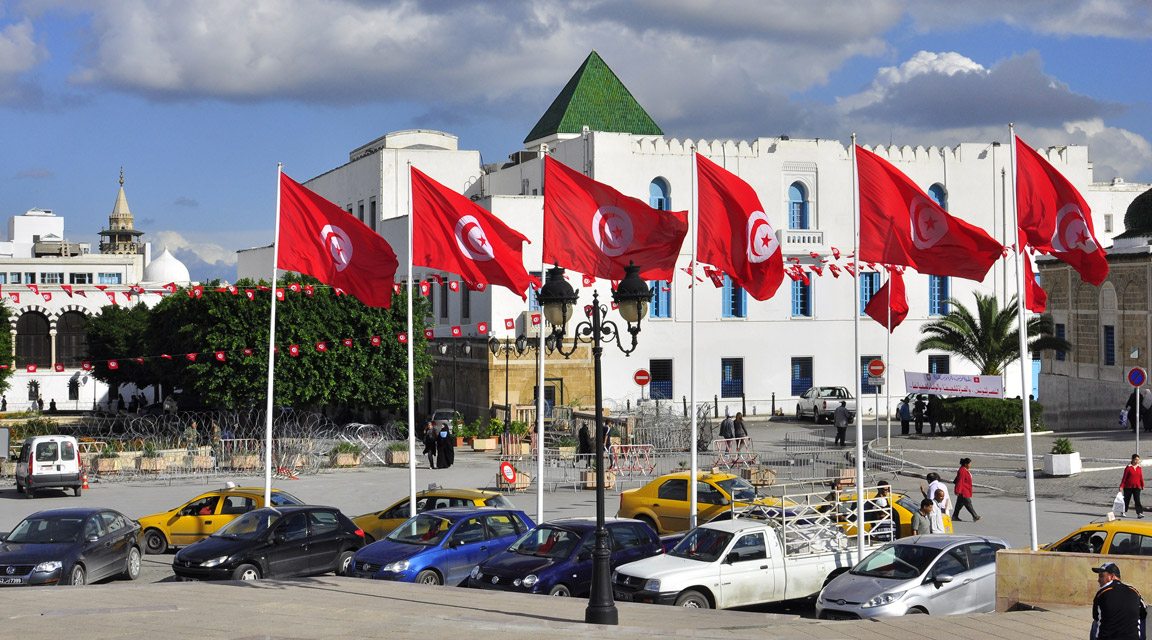

IMF downgrades growth projections
Tunisia will see 2 per cent GDP growth in 2016 and 3 per cent in 2017, gradually rising to 4.7 per cent by 2020, according to IMF figures from the 2016 World Economic Outlook.
The projection has been lowered from October 2015 figures which estimated 3 per cent growth in 2016.
Tunisia was in recession in early 2015 and continues to suffer from high unemployment and instability on its borders with Libya and Algeria. Overall GDP growth in 2015 was barely positive, at 0.8 per cent of GDP.
The pace of government reforms and investment has been slow. Negotiations with the IMF are ongoing for a $2.8bn four year extended fund facility to support the process.
IMF projections on debt have also deteriorated.
Tunisias gross government debt is now expected to increase from TD46.6bn, or 54.5 per cent of GDP in 2015 to TD61.3bn in 2018, reaching 60.2 per cent of GDP. It will then continue increasing in nominal terms but decline as a proportion of GDP to 51.5 per cent by 2021.
| Tunisia | 2015 | 2016e | 2017f | 2018f | Estimates Start After |
|---|---|---|---|---|---|
| Real GDP growth (annual % change) | 0.8 | 2.0 | 3.0 | 3.7 | 2014 |
| Nominal GDP ($bn) | 43.6 | 44.0 | 44.4 | 43.9 | 2014 |
| GDP per capita ($) | 3,923 | 3,919 | 3,913 | 3,834 | 2010 |
| Inflation (% change) | 4.1 | 4.0 | 3.9 | 3.8 | 2015 |
| General government revenue (% of GDP) | 23.3 | 24.4 | 24.4 | 24.8 | 2015 |
| General government total expenditure (% of GDP) | 27.7 | 28.5 | 27.7 | 28.0 | 2015 |
International Monetary Fund, World Economic Outlook Database, April 2016; Click here for full data table | |||||
Tunisia will continue to run both a fiscal and a current account deficit. Economic growth was hit by attacks on foreign tourists in 2015, and foreign investment is being held back by regional uncertainty.
The fiscal deficit will ease slightly in 2016 to TD3.4bn, or 3.6 per cent of GDP thanks to a recovery in government revenues. The IMF expects it to gradually decrease to TD1bn, or 1.6 per cent of GDP by 2021.
The current account deficit will also decrease slightly to $3.4bn (7.7 per cent of GDP). It should continue improving through to 2021, to just $2.3bn, or 4.5 per cent of GDP.
Inflation, a key concern, will drop to under 4 per cent until 2021, and unemployment is expected to fall to 12 per cent by 2018.
You might also like...

Amiral cogen eyes financial close
26 April 2024

Lunate acquires 40% stake in Adnoc Oil Pipelines
26 April 2024

Saudi Arabia's Rawabi Holding raises SR1.2bn in sukuk
26 April 2024

Iraq oil project reaches 70% completion
26 April 2024
A MEED Subscription...
Subscribe or upgrade your current MEED.com package to support your strategic planning with the MENA region’s best source of business information. Proceed to our online shop below to find out more about the features in each package.




